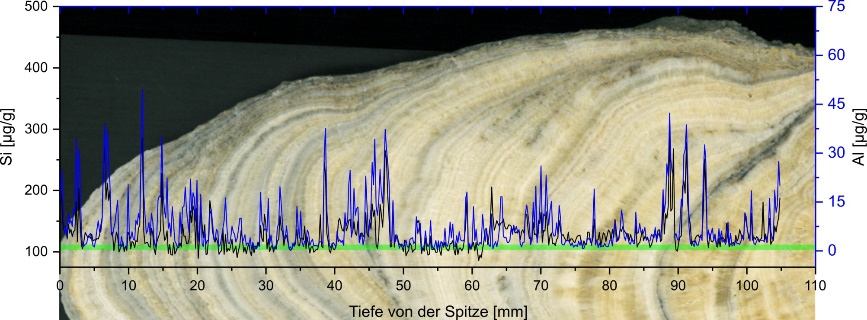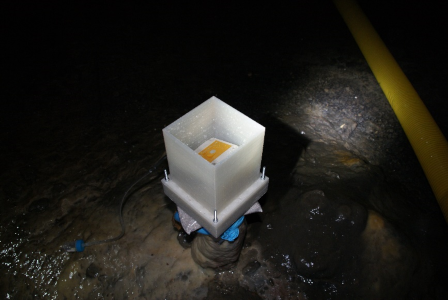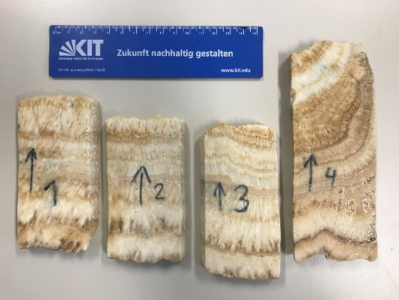Scientific background: Climate change and its impact on environment and humans is one of the main societal challenges of our times. Speleothems are one geological archive that allows reconstructing climate and environment and their possible interaction over up to 500,000 years. Gathering data for a meaningful interpretation of the recorded information in a multi-proxy approach (trace elements, isotopes, mineralogy, geochronology etc.) is highly challenging. The same, extremely limited sample material needs to be used for various analytical methods. Due to the often slow growth rate (<10-100 µm/a) of stalagmites, decadal to annual trends can only be recognized using analytical tools with high spatial resolution. A further perquisite for the interpretation of speleothem records is a thorough understanding of the modern-time relationship between surface conditions, cave environment and dipwater composition, which can only be reached using specially developed or adapted loggers or autosampler systems.
Our strength and some analytical challenges
- Sampling of powdered material with a spatial resolution of <100 µm using a micromill system.
- Determination of isotopic signatures (δ18O, δ13C) and trace element pattern in speleothems with less than 30 µm spatial resolution using IRMS and LA-ICP-MS.
- Monitoring cave atmosphere (T, relative humidity, CO2) with loggers at 100% humidity.
- Automated dripwater sampling for trace element and isotope analysis under harsh conditions in caves without access to electricity.


Analytical possibilities
Current research topics and projects
- Reconstruction of extreme paleoclimatic events in southern Germany based on a combination of speleothems with historical archives (CheckExtrema)
- Investigations on paleoenvironment and plaeofloods in the Ma La / Seo Ho river system, Northern Vietnam, using stalagmites and flowstones (KaWaTech Solutions)
- Improvement of automated dripwater sampling system for remote areas.
- Improvement of cave atmosphere monitoring using heatable boxes.
Selected publications
- Holz, P., Hartmann, A., Eiche, E., Neumann, t., Frank, N., Kluge, T., Schmitt, A., Ludwig, T. 2019. High-resolution dripwater sampling and ion microprobe δ18O analysis – Relationship between modern surface climate signals and speleothem records. Abstract EGU Assembly 2019.
- Hartmann, A., Luetscher, M., Wachter, R., Holz, P., Eiche, E., Neumann, T. 2.18. Technical note: GUARD – an automated fluid sampler preventing sample alteration by contamination, evaporation and gas exchange, suitable for remote areas and harsh conditions. Hydrol. Earth Syst. Sci., 22, 4281–4293.
- Holz, P., Hartmann, A., Eiche, E., Neumann, T., Kluge, T., Meyer, G., Schuh, M. 2017. Identification of Hydrological Extreme Events from High-Resolution Trace Element Distributions in Speleothems. Goldschmidt Abstracts.
- Eiche, E., Hartmann, A., Neumann, T., 2015. Iron enrichment in stalagmites from Java, Indonesia, as an indicator for paleo-floods. Goldschmidt Abstracts 808.
- Hartmann A., Eiche E., Neumann T., Fohlmeister J., Schröder-Ritzrau A., Mangini A., Haryono E. 2013. Multi-proxy evidence for human-induced deforestation and cultivation from a late Holocene stalagmite from middle Java, Indonesia. Chemical Geology 357, 8-17.



